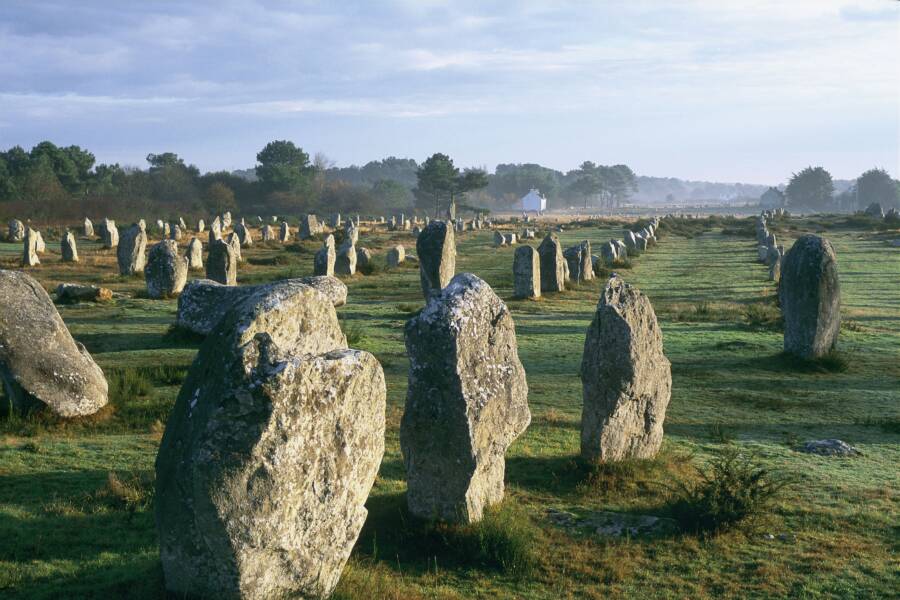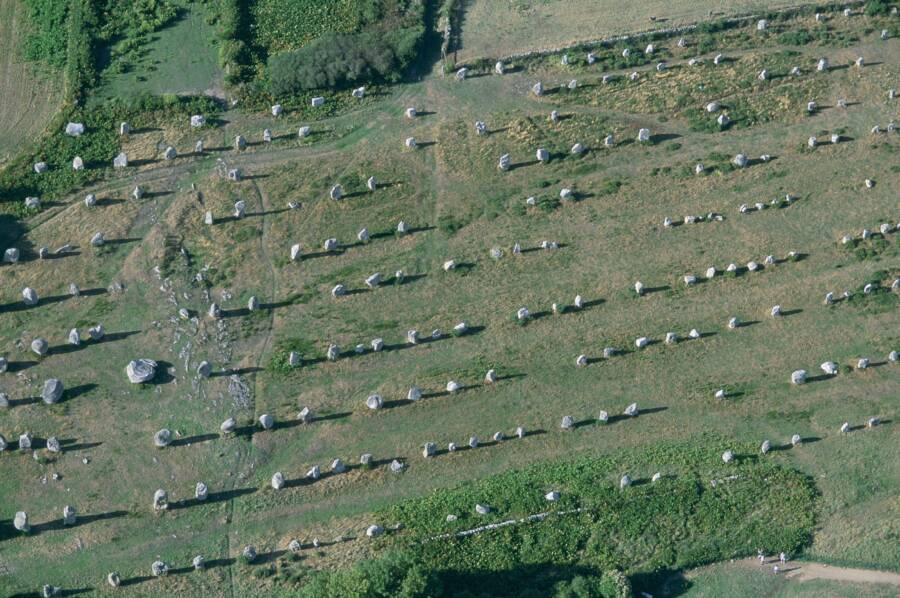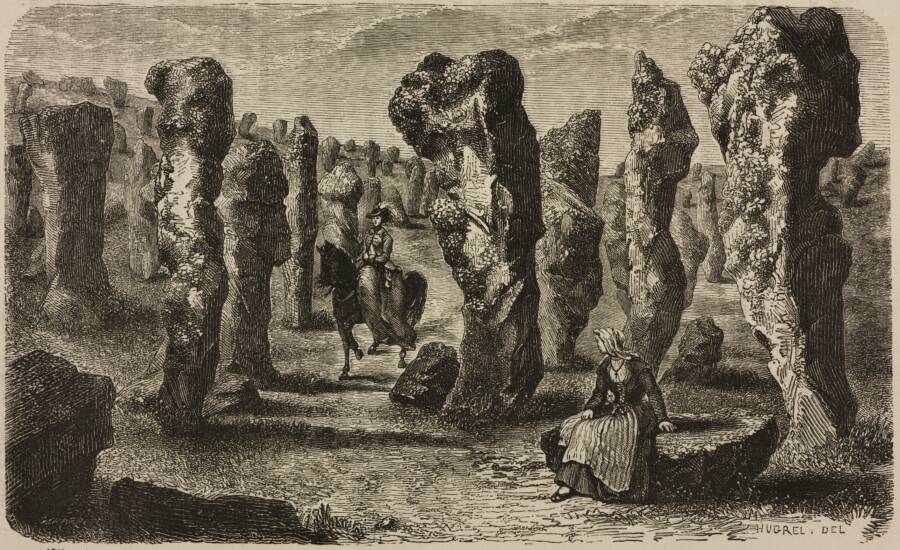What Was The Purpose Of The Carnac Stones?

Gerard Sioen/Gamma-Rapho via Getty ImagesOver 7,000 years old, the Carnac stones in France stand as one of the oldest prehistoric sites in Europe.
On the northwest coast of France lies Carnac, a small town of roughly 4,000 people — and a near equal number of monolithic stone structures dating back to some time between the fifth and third centuries B.C.E.
Known as the Carnac stones, the 3,000 or so stone structures range in size from three to 21 feet tall, with many of them weighing several hundred tons, according to the World History Encyclopedia.
The Carnac stones were arranged in several different fashions, some free-standing “menhirs,” others as individual and collective tombs, and many in alignments and cairns.
It’s clear that the stones had been arranged purposefully, but researchers are unsure about what that purpose was exactly.

Gerard Sioen/Gamma-Rapho via Getty ImagesThe Carnac stones are a European anomaly, the sole example of a pre-Celtic site of this nature.
For a long time, locals believed the stones were magical. The French philosopher André-François Boureau-Deslandes theorized that the stones were natural “upheavals suffered by the Earth.”
And others, such as the writer Gustave Flaubert, dismissed them merely as “large stones.”
Early scholars, however, believed that the stones may have been examples of Celtic temples, or perhaps druidic assembly points. Others thought they may have been celestial maps.
One tale, the legend of St. Cornely, tells that the stones are the petrified bodies of a Roman army who had attempted to attack the saint.

DEA / BIBLIOTECA AMBROSIANA / Getty ImagesA drawing of two women, one on horseback and one sitting among the Carnac stones, by Hugrel, Magasin des Demoiselles.
But as scientific research on the stones developed further into the 19th century and beyond, experts have come to believe that many of the mounds are burial sites that also serve as territorial markers.
It is now believed that the stones were erected by a pre-Celtic culture sometime during the Neolithic period. The general scientific consensus holds that the seemingly random stone arrangements may in fact indicate processional walkways and sacred spaces.
That said, we don’t have any true answers about the people who erected the stones, and any theories regarding the purpose of these ancient mysteries, unfortunately, remain nothing more than theories.





